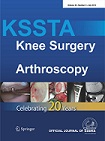
ARTHROPLASTY
Similar functional outcome following subvastus and parapatellar approaches for TKA
This report has been verified
by one or more authors of the
original publication.
Knee Surg Sports Traumatol Arthrosc. 2011 Jun;19(6):943-51. doi: 10.1007/s00167-010-1292-0. Epub 2010 Oct 17
40 patients undergoing total knee arthroplasty (TKA) were randomized to determine the differences in outcome between the subvastus approach and the parapatellar approach. Clinical outcomes were assessed over 3 months postoperatively, and a blunt anatomical dissection was performed to determine the possible disadvantages of employing either technique. The only significant difference that was observed between the approaches was a significantly lower number of patients with extension lag when treated with the subvastus approach. However, the study indicated that the dense innervation of the distal vastus medialis is at higher risk of damage when using the subvastus approach.
Unlock the full ACE Report
You have access to {0} free articles per month.Click below to unlock and view this {1}
Unlock NowCritical appraisals of the latest, high-impact randomized controlled trials and systematic reviews in orthopaedics
Access to OrthoEvidence podcast content, including collaborations with the Journal of Bone and Joint Surgery, interviews with internationally recognized surgeons, and roundtable discussions on orthopaedic news and topics
Subscription to The Pulse, a twice-weekly evidence-based newsletter designed to help you make better clinical decisions
Exclusive access to original content articles, including in-house systematic reviews, and articles on health research methods and hot orthopaedic topics
Or upgrade today and gain access to all OrthoEvidence content for just $1.99 per week.
Already have an account? Log in


Subscribe to "The Pulse"
Evidence-Based Orthopaedics direct to your inbox.
{0} of {1} free articles
Become an OrthoEvidence Premium Member. Expand your perspective with high-quality evidence.
Upgrade Now













































































